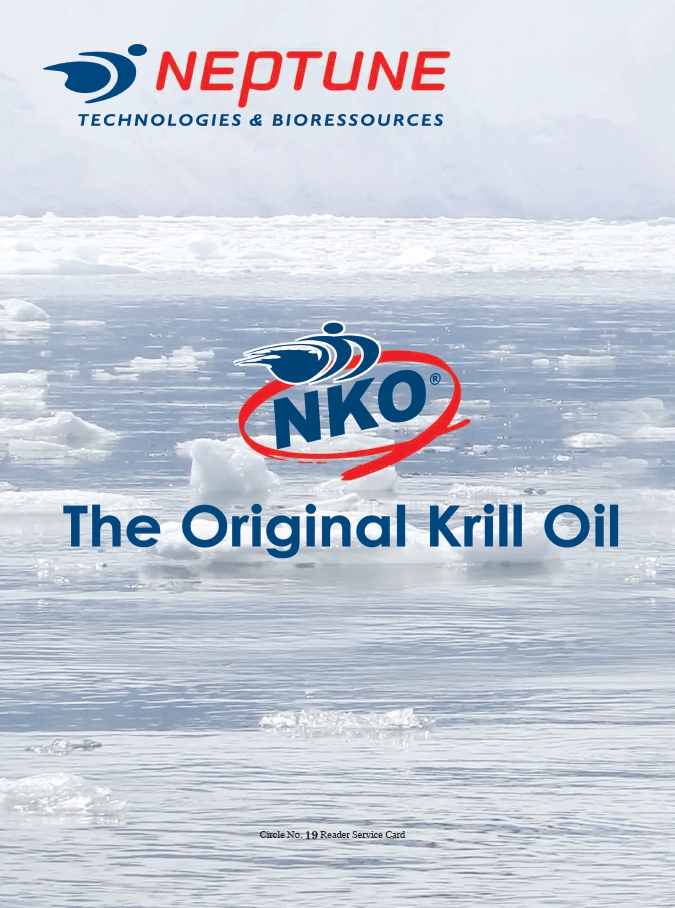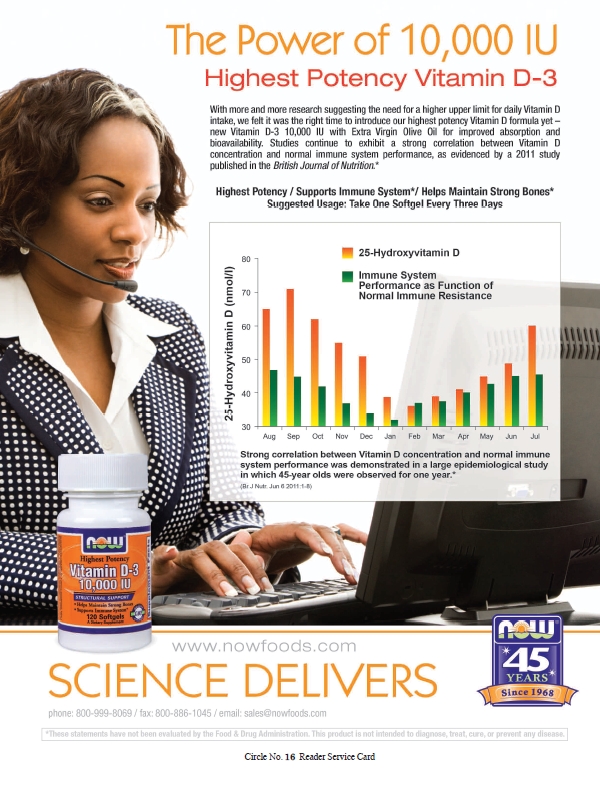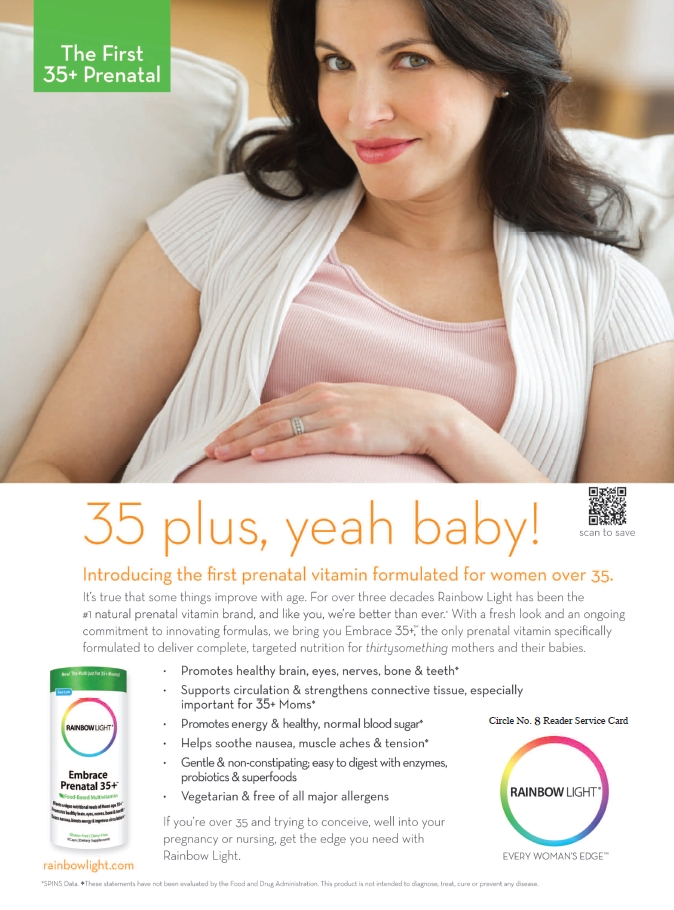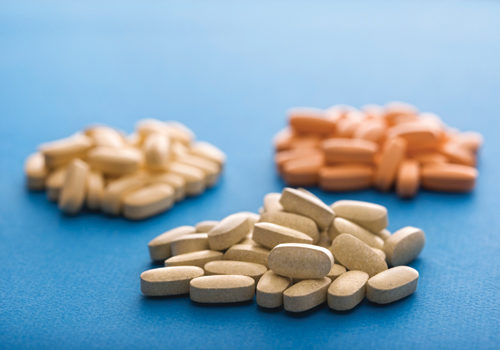Acceptance and compliance are basic concerns in designing better supplements. If consumers don’t take products as intended, the rest won’t matter. Beyond “large pill phobia” and “pill fatigue,” other factors driving supplement delivery innovation include enhanced assimilation, decreased transit time, improved taste and convenience, according to Trisha Sugarek MacDonald, B.S., M.S., director of R&D and national educator for Bluebonnet Nutrition Corporation, Sugar Land, TX. These issues will pop up throughout this feature as we examine various options.
Precious Cargo
Emulsions. Improving the bioavailability and acceptance of fish oil products have been major goals for many manufacturers. According to Andreas Koch, marketing director for Barlean’s, Ferndale, WA, emulsifying oils is one solution. He believes his company’s Omega Swirl is a revolutionary approach.
“For so many generations, taking fish oil supplements has not been anything to look forward to, until manufacturers began flavoring oils,” Koch says. We’ve left behind the unpleasant taste of old-fashioned cod liver oil for higher doses, more efficient absorption and even a pleasant taste experience with fish oil. He describes taking emulsified products as a “liquid candy-like experience.”
In delivering beneficial EPA and DHA, emulsified oils can present a texture similar to yogurt, he says, in an all-natural, zero-sugar format. Koch says premicronizing the particles renders the omega-3s more absorbable, as smaller particle size allows for more rapid assimilation through the intestinal tract and into the bloodstream. According to Koch, this contrasts with the digestion, assimilation and bioavailability of other fish oils, where the digestive enzyme lipase is necessary to break fatty acid bonds, and bile acids from the gallbladder are needed to emulsify the oil prior to assimilation.
Bryan See, regional product manager for  Carotech Inc., Edison, NJ, talks about emulsions in the context of vitamin E, specifically its tocotrienol form. His firm has developed a “unique self-emulsifying tocotrienol delivery system that specifically overcomes the poor absorption and low bioavailability of tocotrienols,” he says. He describes the result of this emulsifying process as a natural full-spectrum palm tocotrienol complex liquid suspension, and adds that it is readily encapsulated into softgels.
Carotech Inc., Edison, NJ, talks about emulsions in the context of vitamin E, specifically its tocotrienol form. His firm has developed a “unique self-emulsifying tocotrienol delivery system that specifically overcomes the poor absorption and low bioavailability of tocotrienols,” he says. He describes the result of this emulsifying process as a natural full-spectrum palm tocotrienol complex liquid suspension, and adds that it is readily encapsulated into softgels.
See explains research has found the oral bioavailability of regular tocotrienol oil to be poor, incomplete and inconsistent. Without accounting for this, he says, clinical trials using tocotrienols won’t likely produce benefits. A recent human tissue distribution study found that his company’s patented ingredient (Tocomin SupraBio) is well absorbed and distributed in vital human organs and tissues, including the brain, heart and skin (1).
“This is the first ever actual human tissue distribution study on tocotrienols that proves the bioavailability and bioefficiency of Tocomin SupraBio,” says See. The study found the improved bioavailability of tocotrienols led to a reduction in liver damage scores in patients suffering from end-stage liver disease.
Liquid supplements. It took the launch of a liquid multivitamin for his company to realize the full appeal of liquid supplements, but now it focuses on them, says Scott Boyson, marketing manager for Trace Minerals Research, Ogden, UT. There are a few reasons for this appeal, and many argue it starts with product efficacy.
“Delivery methodology is an important consideration with regard to bioavailability,” says Ken Whitman, president of Natural Vitality, Austin, TX. His company chose liquid formats for its products because they offer nutrients in an already broken down form, ready to be assimilated, and there were no binders or fillers to consider.
With liquids, Whitman adds, one must contend with taste. “We believe that taste in liquids is key. It has to be a pleasant experience. If it is not, it violates the first principle of bioavailability—taking the supplement regularly,” he says. Whitman says liquids also lend themselves well to combination products.
As one of the first in the industry to sell liquid supplements, Lester Burks, CMO of Life Line Foods, LLC, Pikeville, TN, says his company is “dedicated to producing liquid dietary supplements because this medium allows for more complex synergistic formulas that are faster and more efficient than other delivery systems.” With the potential for capsules and tablets to get stuck in the throat, the inconvenience of multiple pills and the extra calories or sugars in some solid supplements, liquids present an alternative, he argues.
Burks says his company’s brand, Buried Treasure, uses a delivery system that allows for the synergy of ingredients. These combinations are difficult to produce in meaningful potencies that get results in other delivery formats, he says. Burks also notes that delivery forms should be tailored to what the consumer is used to in a given market. “For example, in the sports nutrition market, liquids are probably the most expected form for a supplement,” he says.
Sublinguals. Put it beneath your tongue and move on with your day. That is what sublingual tablets offer and, in addition, they help the nutrients involved to bypass the digestive system, according to Matthew Supkoff, director of sales and marketing for Continental Vitamin Company, Los Angeles, CA. His company’s format (MicroLingual) consists of soft-molded tablets that dissolve immediately, enhancing the rate of absorption.
 Of the manufacturing process, Supkoff says, “Our proprietary method involves using low-pressure hydromolecular (LPH) technology to create these unique tablets.” Like other innovative delivery formats, it is specially suited to certain types of nutrients. He says, “Our delivery system is particularly ideal for B12 absorption.”
Of the manufacturing process, Supkoff says, “Our proprietary method involves using low-pressure hydromolecular (LPH) technology to create these unique tablets.” Like other innovative delivery formats, it is specially suited to certain types of nutrients. He says, “Our delivery system is particularly ideal for B12 absorption.”
Instant-dissolve tablets, Supkoff believes, may appeal to many people that don’t like taking large capsules or compressed tablets. This especially includes the elderly, who often have trouble swallowing them, and sometimes face physiological challenges in absorbing nutrients.
Phospholipid delivery. Several advanced strategies can enhance the bioavailability of nutrients, including the use of phospholipids as nutrient vessels, called liposomes. “This produces an effect similar to the bioavailability that liquids afford,” says Burks. These microscopic lipid vesicles can change the activity of not only pharmaceuticals, but also herbs, vitamins and enzymes, he says. Because of their unique properties, phospholipid carriers can enhance product performance by increasing solubility and stability.
“Phospholipids are a group of phosphorus-containing lipids (fats) that are found in almost every cell in our body and help to promote cell membrane fluidity, facilitate cell-to-cell signaling, and assist in the processing of nutrients by the cell,” says Jeff Taylor, executive director of product development for Life Extension, Fort Lauderdale, FL. The lipophilic and hydrophilic properties of phospholipids make them ideal for nutrient delivery.
His company works with a phospholipid formulation technology. “Many compounds are unable to dissolve in the aqueous medium of the gastrointestinal tract and penetrate the unstirred water layer that is lining the intestines, preventing molecules from gaining access to the intestinal enterocytes and being brought into tissues,” Taylor explains. When phospholipids accompany such poorly absorbed nutrients, the body recognizes the lipids, and signals the digestive system to secrete digestive enzymes and bile salts so that emulsification can occur, he says. This process allows nutrients to be transported through the lymphatic system. By avoiding the first stages of metabolism, they can remain in their active form for longer time spans and bestow their beneficial effects on cells.
Gelatin alternatives. There is much lifestyle-driven innovation in supplement delivery, but of course, any such solution needs to work well to be viable. Catering to vegetarians is one booming area, and this can be achieved with substitutes for the standard animal-based gelatin capsule. Sugarek MacDonald says her company’s offering in this space uses a two-piece capsule (Vcaps Plus from Capsugel) made from plant-based fiber known as vegetable cellulose.
This natural option, she says, can actually outperform gelatin capsules when it comes to moisture-sensitive ingredients. They also allow immediate release in the gut, thereby enhancing absorption. “We believe that providing vegetarian capsules in order to satisfy a variety of lifestyles for all ingredients is just as important as the natural ingredients they protect,” Sugarek MacDonald says. Both this proprietary format and another vegetarian option (Plantcaps from Capsugel) were just Non-GMO Project Verified. Another alternative is a variety of a liquid-filled capsule (Licaps from Capsugel), which she describes as an attempt to move away from gelatin-based softgels for the delivery of fat-soluble compounds.
Gelatin innovation. Sticking with the gel cap  space, Lara Niemann, marketing director for the Americas for Gelita, Sergeant Bluff, IA, tells us about her company’s forays in improving gelatin formats. She says it has recently introduced a format (GELITA RXL) that reduces the possibility of cross-linking. This is when, usually due to stressors such as high heat or humidity, gel capsules undergo chemical changes that make them harder to dissolve, thus affecting product performance (2).
space, Lara Niemann, marketing director for the Americas for Gelita, Sergeant Bluff, IA, tells us about her company’s forays in improving gelatin formats. She says it has recently introduced a format (GELITA RXL) that reduces the possibility of cross-linking. This is when, usually due to stressors such as high heat or humidity, gel capsules undergo chemical changes that make them harder to dissolve, thus affecting product performance (2).
“This patented technology provides strong resistance to cross-linking and enables formulators to utilize materials that once were impossible to use because product shelf-life would be a problem,” Niemann says. It is a particularly useful solution in soft gel formats, she adds, as it allows for soft gel formulation at a higher pH level. The format was developed without any non-gelatin additives. Niemann says it can also speed up product development because it reduces the chance that a finished product will not meet storage requirements.
Effervescents. Similar to his company’s experience with liquid supplements, Boyson says, was its effervescents debut. The firm knew it was on to something with the launch of an effervescent electrolyte with vitamin C, once it took off in popularity. Effervescence, as explained by Lisa Lent, founder and CEO of Vitalah, Watsonville, CA, creators of Oxylent, is a simple chemical reaction. An organic acid (like citric acid) mixes with a carbonate salt (like potassium), and this releases carbon dioxide. “Water is needed to start the reaction,” Lent says. “Without water, neither the food acid nor the carbonate can dissociate, and the effervescent reaction cannot start.”
The bubbly, sparkly sight of effervescence is accompanied by increased bioavailability, a better user experience and even increased sustainability, Lent says, as these products require less energy to manufacture and often require less packaging.
The boost in absorption has multiple sources. First, effervescent supplements require less digestion, she says, as they don’t need to be broken down by stomach acids to be absorbed by the small intestine. She explains this is an advantage for everyone, but especially those with compromised digestion, intestinal health issues or low stomach acid, as well as bariatric patients. Research also suggests that the carbon dioxide released helps improve absorption across the intestinal wall by altering the paracellular pathway (transport between the cells).
Probiotics delivery. In the probiotics space, the focus on improving delivery formats has been intense. That’s because it is difficult to ensure that the beneficial strain or strains of bacteria reach the digestive tract in a viable state. Boyson notes that delayed-release capsules are typically employed by probiotics companies, so the probiotics can reach the small intestine without harm.
One instance of this technology was developed from a pharmaceutical delivery system, according to Tim Gamble, president and CEO of Nutraceutix, Inc., Redmond, WA. The format (BIO-tract) was chosen due to its ability to protect sensitive ingredients from stomach acid and to provide an extended, gentle release of probiotics during its transit through the intestines. Gamble says it was developed on the back of earlier technology that extends the shelf life of probiotics.
“Our objective was to create a flexible delivery vehicle that allowed us to formulate a broad range of release profiles,” he explains. As opposed to the inflexible solutions offered by more basic delayed-release options like enteric-coated capsules, this technology allows nutrients to be released gradually over a desired timeframe, in prime locations within the digestive system. The system requires no undesirable coatings, he says, and doesn’t need special handling or packaging. Supplements can be created in virtually any size or shape and can remain effective if damaged.
This technology has led to requests for combination products, Gamble says. Most tend to include popular probiotic strains along with vitamins, alone or in multiple, and other ingredients. These other compounds can also be released past the stomach at optimal rates. Many of these formulations, he says, allow for once-daily dosing, an advantage for both consumers and brands.
Niemann adds that her company is in the midst of developing a one-step solution for delayed-release supplements, one that wouldn’t require major alterations to production processes or formulations. Fish oils, she says, are one active compound that might be ideally suited to this new format.
Microencapsulation. Tiny particles with protective coatings around them are of obvious use in formulating supplements. Lent describes the importance of microencapsulation to one of the compounds in her company’s effervescent formulas: the antioxidant enzyme superoxide dismutase (SOD). “Until recently, effective supplementation of SOD was limited by human digestion, since the antioxidant properties of SOD were destroyed by stomach acid,” she says.
But, microencapsulation with SOD can remain bioactive after ingestion, Lent says, since it is protected from stomach acid and able to be delivered to the intestines. She notes that since they use the wheat protein gliadin, many microencapsulated SOD products aren’t gluten free. The use of starch microspheres allows her company’s products to make the claim, and the microspheres are themselves coated with a protective gum arabic film.
The protection of active nutrients through this technology is spreading beyond the supplement space. “Another emerging trend is the use of microencapsulation within functional foods,” says Burks. Compounds including vitamins, omega-3s, antioxidants, calcium and iron have been microencapsulated for food, but the trend has limitations. Burks says microencapsulation will continue to play a role in the process of adding nutrition to foods, but it will always make an ingredient more expensive, and the actual bioavailability of said ingredients will be of concern. Gamble agrees, stating, “Microencapsulation has always been trendy, but has had trouble reaching the dietary supplement market reliably due to the complexities and costs it adds to production.”
Crystallized powder. Companies realize that any barriers to taking vitamins not only prevent consumers from seeing benefits, but also decrease sales at retail, says Hallie Rich, founder and president of Rich Vitamins LLC, New York, NY. Her company’s solution was to develop a multivitamin and mineral (alternaVites) that uses a patent-pending crystal powder that can be sprinkled directly on the tongue, where it promptly melts (think Pixy Stix, Rich says). The product can also be mixed into liquids or placed on snacks. Rich says it is targeted to both adults and kids, and is designed to help those who struggle to swallow pills.
“This specific delivery format was also chosen as it can be formulated without sugar, gluten, animal products, fillers or binders and, as such, can be a great alternative for those with specific dietary restrictions,” Rich says. As someone who couldn’t find a multivitamin that suited her needs despite a lifetime in the vitamin industry, she says it was apparent there was a void to fill. “By offering a multi in powder form that can be taken in so many ways and that is available in packaging that allows for ease of use, we have been able to uniquely target the disenfranchised but interested consumer like never before,” she says. Rather than stealing attention away from other vitamin formats, she explains that this delivery system has brought both new and lapsed consumers into the category.
The focus on powder products at Boyson’s company has also been by design. “People want convenience. Powders that are packaged in sachets are great because they are single-serving sizes for those on the go. Consumers can put them in their lunch box, purse or pocket and they’re off, no repackaging required and they take up hardly any space,” he says.
Finding the right delivery system is, again, often a matter of pairing form with content. According to Sugarek MacDonald, one match made in heaven is sports nutrition products with powder or liquid formats. Powdered protein can be mixed into smoothies or anything else consumers can come up with. Quick absorption is another factor that is of importance to the athlete. “Disadvantages of powdered beverages, however, include a shorter shelf life, and the need to mix the product with a liquid,” she says.
For his part, Boyson says, “We have found that green and electrolyte products are received very well in a powdered form.” Indeed, he acknowledges some supplements, like probiotics, are especially suited to certain delivery systems. However, he says that providing a different delivery option than the dominant one in a given sector helps in reaching a new consumer base. WF
References
1. V. Patel, et al., “Oral Tocotrienols are Transported to Human Tissues and Delay the Progression of the Model for End-stage Liver Disease Score in Patients,” J. Nutr. 142(3), 513-9 (2012).
2. X. Song, Y. Cui and M. Xie, “Gelatin Capsule Shell Cross-Linking,” Pharm. Tech. 35(5), 62–68 (2011).
Published in WholeFoods Magazine, December 2013









